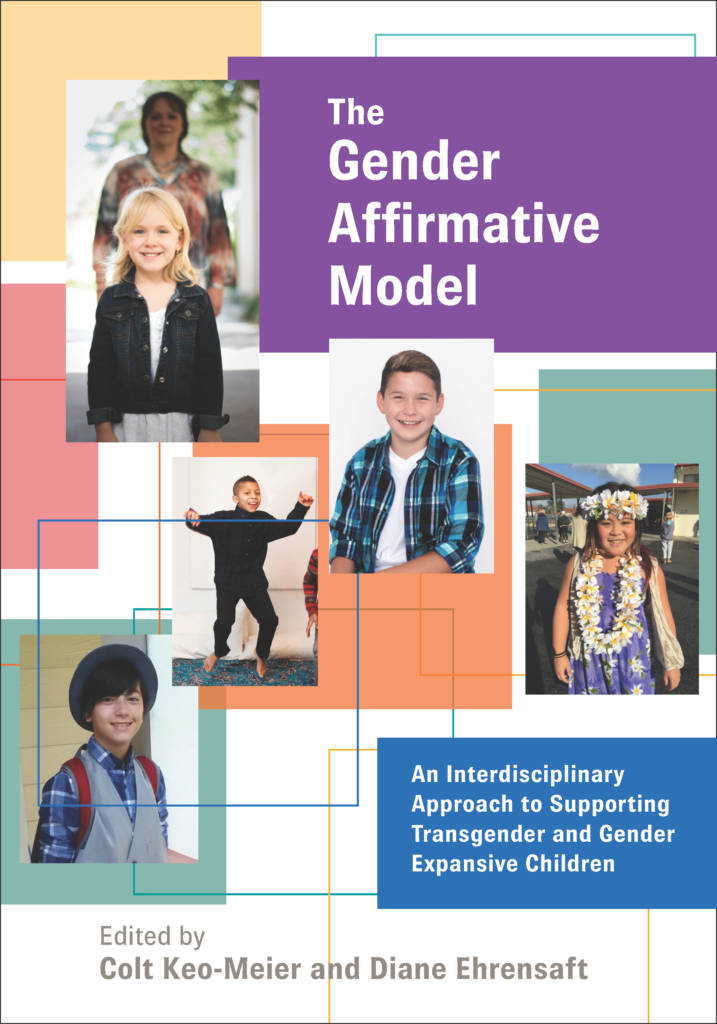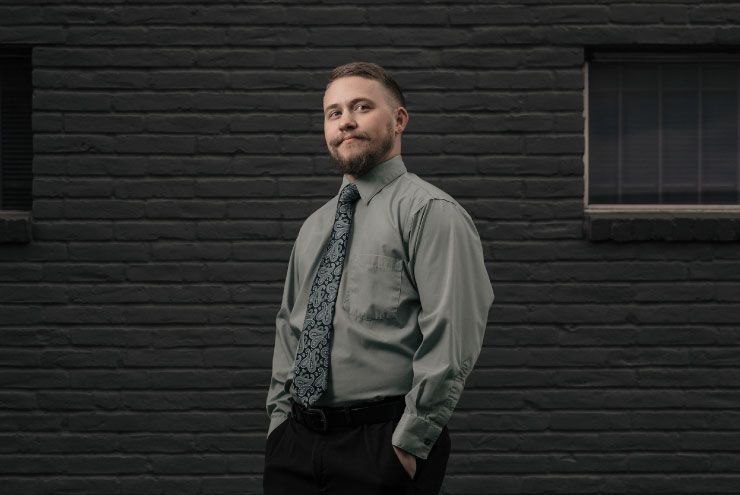By Crimson Jordan
Attacks on transgender and gender expansive individuals stem directly from a lack of knowledge and understanding. This ignorance has found its way into places like state capitol buildings and schools, where it affects the most vulnerable individuals—children. Education is the key to combating this issue, and—with the release of their groundbreaking book, The Gender Affirmative Model: An Interdisciplinary Approach to Supporting Transgender and Gender Expansive Children—Dr. Colt Keo-Meier and Dr. Diane Ehrensaft aim to provide such education in a way that is accessible and applicable for all consumers.
Published by the American Psychological Association (APA), The Gender Affirmative Model contains contributions from 20 authors, several of which are mental health providers and professionals who can personally identify with the book’s subject matter. Dr. Keo-Meier’s own identity as a licensed psychologist and transgender man was vital to his role as co-editor of the book. “[The book was] created by mostly psychologists and, not everybody, but most of us are either out as trans ourselves or have a child who is on a gender journey,” Dr. Keo-Meier explains.

‘The Gender Affirmative Model: An Interdisciplinary Approach to Supporting Transgender and Gender Expansive Children.’ Photo courtesy Dr. Colt Keo-Meier.
The Gender Affirmative Model serves several purposes: It is intended to help educate psychologists and other mental health providers on how to provide culturally–competent care to transgender and gender expansive children and their families. It also lays the groundwork for further dialogue and research into developing evidence-based practice for working with this population.
The book, written specifically about the gender affirmative approach toward transgender and gender expansive youth, is the first of its kind, Keo-Meier says. It marks the premier text that discusses social transition for youth and how mental health providers can support families through that process. “The criticism is always, ‘There’s not enough research,’” Keo-Meier says. “Well, we’ve included all possible research that was available up until the date of publication, as well as something just as important—clinical experience. [The book includes] the clinical experience of experts who have worked with these families for years and who have seen what happens when a child is supported in what they are saying about their gender.”
Though originally intended as a tool for mental health providers, The Gender Affirmative Model has the capability to be an educational resource for any reader. The book is written in accessible language and its concepts are easily digestible. “Some kids are telling us specifically about their gender expression. Some kids are telling us specifically about their gender identity. Some kids are telling us about both,” Dr. Keo-Meier says. “For most parents who have never known about these different terms or that there is a difference between them, they feel overwhelmed or feel like they don’t understand anything that’s going on. For parents to have a better grip on this, and for providers who have parents coming in with all these questions, we feel like this will help.”
Dr. Keo-Meier explains that The Gender Affirmative Model is the product of a four-year labor of love that stemmed from his work with Division 44, the APA’s LGBTQ division. Dr. Keo-Meier served on the APA’s committees for both children and transgender individuals, where he created educational fact sheets about transgender children and teenagers and explained the differences between gender expression and internal sense of self to his fellow professionals. His work was so well-received that Dr. Arlene Noriega approached and asked him if he’d be open to creating a book based on this information. He, of course, said yes.

Dr. Diane Ehrensaft, co-editor of ‘The Gender Affirmative Model.’
Dr. Keo-Meier then reached out to colleague Dr. Diane Ehrensaft to serve as his fellow co-editor on the project. As the Director of Mental Health for the Child and Adolescent Gender Center in San Francisco and a developmental and clinical psychologist, caring for trans and gender expansive children is at the core of Dr. Ehrensaft’s work. The book’s subject is also a personal one. “I am a cisgender mother of a now grown man who was a gender expansive little boy,” Dr. Ehrensaft says. “So I learned on my feet, in the 1970s, how to raise a boy who liked tutus. So in my own experience as a parent, I was boots on the ground a long time ago.”
She adds that The Gender Affirmative Model is not only inclusive of transgender children, but all children who express their gender differently. Dr. Ehrensaft explains that, when a child defies societal gender norms and is met with a negative reaction, they experience stress. These feelings can lead to anxiety, feelings of hopelessness, and thoughts of suicide. “In this country, we’ve grown up in a culture where for so long—and [this belief] still exists—people felt that you had to cure someone who didn’t conform to expectations of gender,” she says. “The Gender Affirmative Model turns that upside down. It says that the way we look at gender and gender expression, that rainbow spectrum of expression, is a positive thing and an understandable part of human nature. As long as we can provide acceptance and respect, the kids are going to be okay.”
Each chapter examines trans and gender expansive children from an individual, family, and cultural perspective, tackling topics ranging from the difference between genderfluid and transgender children, to advocating for trans children, to family and society. “Each chapter stands on its own and could be its own small book,” Dr. Ehrensaft says. “We tried to choose very carefully what topics we wanted, and who we wanted to write them, and we lucked out. We have a wonderful group of authors, a wonderful group of topics, and great writing about each of those topics.”
Dr. Ehrensaft hopes that The Gender Affirmative Model leaves readers with one simple notion—it’s not our place to tell a child their gender. Rather, we should allow the child to tell us their gender, listen, and learn. This process defines a gender journey—for the child, for professionals working with the child, and for a child’s family and support network. “We are hoping that this book will expand the skills and sensitivities of not just people who call themselves gender specialists, but anybody who’s treating either a little kid or adolescent so that there is gender sensitivity in all mental health work,” she says, adding that she hopes the book will help parents view their child’s exploration of gender in a more positive light.
This support is vital, Dr. Ehrensaft says, as it provides a healthy environment for the child to grow and prevents them from experiencing the stress of being unaffirmed in their identity—stress that can last long into adulthood. “When people in the field ask transgender adults, ‘What’s transition been like for you?’ ‘Do you have any regrets?,’” Dr. Keo-Meier says. “The number one response I get is ‘My only regret is that I didn’t transition sooner in life. My only regret is that I didn’t do this earlier. My only regret is that I waited so long.’ And we hear that so often. My goal is to prevent that adult heartache and regret by affirming and supporting youth when they tell us who they are when they are young.”
“I hope that this book helps to educate both mental health providers and families on how to listen to what their children are saying about their gender—and then how to understand,” Dr. Keo-Meier adds. “And finally, provide tools on what to do from there.”
“It’s a very simple truth,” Dr. Ehrensaft says. “When children are supported—and that means accepted—they will do beautifully.”
For more information on The Gender Affirmative Model: An Interdisciplinary Approach to Supporting Transgender and Gender Expansive Children, visit apa.org/pubs/books/4317487.aspx.








dylan forbis
June 25, 2018 at 9:57 PMThis is all so amazing!! I <3 my community! Great article.